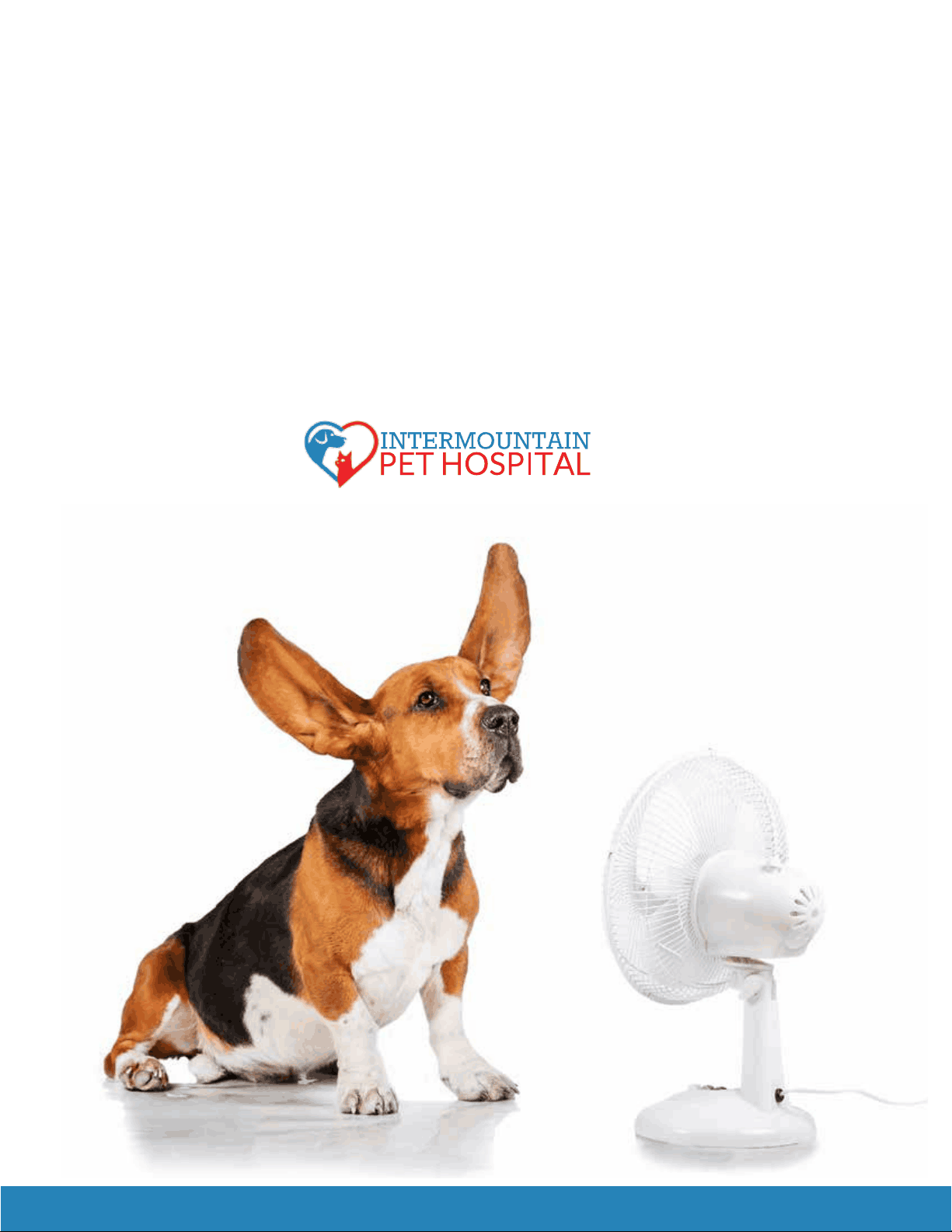





Study with the several resources on Docsity

Earn points by helping other students or get them with a premium plan


Prepare for your exams
Study with the several resources on Docsity

Earn points to download
Earn points by helping other students or get them with a premium plan
Community
Ask the community for help and clear up your study doubts
Discover the best universities in your country according to Docsity users
Free resources
Download our free guides on studying techniques, anxiety management strategies, and thesis advice from Docsity tutors
Learn how dogs cope with heat, recognize the signs of heatstroke, and take steps to prevent it. This eBook from Intermountain PET HOSPITAL provides valuable information on how to keep your dog safe and comfortable during hot weather. Understand the importance of providing water, recognizing warning signs, and cooling down your dog if necessary. Also, be aware of legal ramifications of neglecting your dog's heat-related needs.
Typology: Slides
1 / 5

This page cannot be seen from the preview
Don't miss anything!




If you've downloaded this eBook, then we know that you are a dog owner who is genuinely concerned about the welfare of their pet. Welcome to the club!
As a concerned dog/pet owner, there are some key ways to care for and look after your dog. One of those ways is dealing with the heat (and we all know that the Treasure Valley cranks out some heat!). Summertime is that wonderful time of the year when all you want to do is be outside in the sun, adventuring with your best friend. Unfortunately, there are places and times where you can't bring your dog, and there are various reasons for this. Ultimately, in these situations, it is important to make sure that your dog is cared for and comfortable. This eBook will prepare you for such situations and give you a deeper understanding of how your dog functions in the heat.
It is important to be aware of how the heat affects your dog, understand the warning signs that your dog is not handling the heat well, know the steps you can take to avoid harm to your pet, and the legal ramifications of ignoring your dogs needs. Let's delve deeper into this.
Dogs are especially vulnerable to heat-related illnesses. Unlike us, dogs don't sweat. There are only two ways through which they cool down: Panting, and through the pads of their feet.
A dog's normal body temperature is between 100 and 102.5 degrees (according to Dr.Beede and all of the vets at IPH). Anything above that can only be withstood for a short amount of time before their body is damaged. When a dog starts warming up to a temperature beyond their normal range, their cooling mechanisms kick in. They start panting and drooling, and their blood vessels dilate. Their heart then starts working harder to supply blood to the dilated vessels. This causes blood to start pooling in their organs (I know, not a pretty thought), and their blood pressure begins to drop.
This is when organs start to damage. Blood clots form, organs start suffering thermal damage, the brain swells, and your dog will start exhibiting symptoms such as severe bloody diarrhea and vomiting. Once the dog’s body reaches a temperature of 109, there is irreversible brain damage, possible seizures, a coma, and maybe even death.
water with small dogs), and increase air movement around the dog using a fan. Do not use COLD water. This can be counterproductive. Cooling too quickly can cause your dog's temperature to drop too low and their blood vessels to constrict, causing other life-threatening medical conditions. Check your dog's rectal temperature every five minutes until their body temperature has reached 103 degrees. Then dry their body so that they don't continue to cool down.
Even if your dog appears to be recovering, take them to a veterinarian as soon as possible. There may be damage to your dog that isn't immediately noticeable, but could be detrimental later.
If you have not already done so, the vet will lower your dog's body temperature to a safe range. Then fluids and oxygen will be given to your dog to ensure they are adequately hydrated. They will then be monitored for internal issues such as respiratory distress, kidney failure, heart abnormalities, etc. Blood samples may also be taken to monitor clotting time of the blood. Treatment will be decided based on the results of monitoring and tests.
Not only are there physical effects of leaving your dog out in the heat, but there could also be legal ramifications.
Many people are aware that leaving a child in a hot car has serious legal consequences, but did you know that this is also the case with pets?
According to Eric Skoglund of the Nampa Police Department, "Animal Control officers in Idaho can cite a person for leaving a dog in a hot car with animal cruelty, which is a misdemeanor."
Even if it is 70 degrees outside, it could be over 100 degrees in your car if there is no airflow. Leaving your windows down for the dog may not be enough if there is no wind.
According to Lewiston Animal Control Officer Doug Willey, Summertime is a common time for citations of animal abuse. If they receive complaints about dog's left in cars (windows rolled down or not), they investigate it. If the results of their investigation prove somebody should be cited, then they are cited under the animal cruelty code, and again, that is a misdemeanor.
If you see a dog in a car exhibiting the signs of heatstroke:
Enjoy your Summer days in the heat, but make sure that you are also aware of your dog's needs. Make sure you understand how the heat is affecting your dog and the steps to ensure its safety. And if you find yourself in a jam, and your pet is suffering from the heat, take the steps necessary to take care of them. Don't hesitate to call us with any questions, concerns, or assistance you may need. We're here whenever you and your best friend need us!